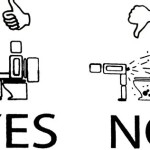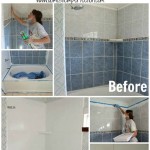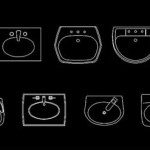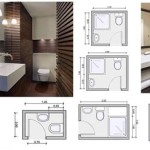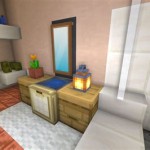How To Organize A Deep Bathroom Closet
A deep bathroom closet, while offering ample storage potential, often becomes a repository for clutter and disorganization. Its depth can make items difficult to access and lead to wasted space. A strategic approach is essential to transform this often-overlooked area into a functional and aesthetically pleasing storage solution. The following guidelines offer a comprehensive approach to maximizing the utility of a deep bathroom closet.
Initial Assessment and Decluttering
The first step in organizing a deep bathroom closet is a thorough assessment of its current state. Empty the entire closet, removing all items from shelves and the floor. This process allows for a clear evaluation of the space and a comprehensive inventory of the contents. Categorize items as they are removed, creating groups such as toiletries, towels, cleaning supplies, and medications. This categorization will be instrumental in the subsequent organization phase.
Once the closet is empty, perform a deep cleaning. Vacuum or sweep the floor, wipe down the shelves and walls, and address any mold or mildew issues. A clean environment provides a fresh start and prevents the spread of dust and allergens. Consider using a mild disinfectant to sanitize surfaces and eliminate potential odors.
The decluttering phase involves critically evaluating each item removed from the closet. Discard expired medications, empty bottles, and damaged or unwanted items. Be realistic about usage patterns and avoid keeping items that are rarely or never used. Consider donating unopened or gently used toiletries to local shelters or charities. This process reduces clutter and creates more space for the items that are truly needed.
For items that are kept, assess their condition. Check for leaks, spills, or damage. Replace damaged containers or transfer contents to more suitable storage solutions. This step ensures that the closet remains clean and organized and prevents potential messes.
Strategic Storage Solutions
Once the closet is decluttered and cleaned, the next step is to implement strategic storage solutions that maximize the available space and improve accessibility. The depth of the closet necessitates creative solutions to prevent items from being lost or forgotten in the back.
Adjustable shelving is a highly effective way to customize the storage space to suit specific needs. Adjustable shelves allow for different heights to accommodate various items, preventing wasted space. Consider using wire shelving or solid shelving depending on the type of items being stored. Wire shelving allows for better air circulation, while solid shelving provides a more stable surface for smaller items.
Drawer units can be incorporated into the closet to provide concealed storage for smaller items such as makeup, skincare products, and travel-sized toiletries. Drawer units can be freestanding or built-in, depending on the available space and budget. Opt for clear drawers to easily identify the contents or label each drawer for easy reference.
Baskets and bins are essential for organizing smaller items and preventing clutter. Use baskets and bins to group similar items together, such as towels of the same size and color, or cleaning supplies for specific purposes. Label each basket or bin clearly to ensure that items are easily located. Choose baskets and bins that are durable and easy to clean.
Utilize the vertical space in the closet by installing hooks and over-the-door organizers. Hooks can be used to hang towels, robes, or small storage bags. Over-the-door organizers provide additional storage for toiletries, cleaning supplies, or accessories. These solutions maximize the available space and keep items within easy reach.
Consider using shelf dividers to separate stacks of towels or linens. Shelf dividers prevent stacks from toppling over and create a more organized and visually appealing appearance. Choose adjustable shelf dividers to accommodate different sizes of items.
Lazy Susans or rotating organizers are particularly useful for storing smaller items in the back of the closet. These organizers allow for easy access to all items without having to reach deep into the closet. Use them to store medications, toiletries, or cleaning supplies.
Maintaining Organization and Accessibility
Once the closet is organized, it is essential to implement strategies to maintain its organization and accessibility over time. Regular maintenance and proactive habits will prevent it from reverting to its previous cluttered state.
Implement a "one in, one out" rule. For every new item that is brought into the closet, an old or unused item should be discarded. This prevents the accumulation of unnecessary items and keeps the closet from becoming overcrowded.
Regularly review the contents of the closet and discard expired or unused items. Check expiration dates on medications and toiletries and dispose of them properly. Remove any items that are no longer needed or used. This routine decluttering prevents the buildup of clutter and keeps the closet organized.
Reorganize items as needed to accommodate changes in storage needs. As new items are added or existing items are rearranged, adjust the shelves, drawers, and baskets accordingly. This ensures that the closet remains functional and accessible over time.
Label all shelves, drawers, and baskets clearly. Clear labeling makes it easy to find items and prevents confusion. Use a label maker or write labels by hand, ensuring that they are legible and durable. This simple step significantly improves the organization and accessibility of the closet.
Store frequently used items within easy reach and less frequently used items in the back or on higher shelves. This arrangement ensures that the items that are used most often are readily accessible.
Encourage all household members to participate in maintaining the organization of the bathroom closet. Educate them on the storage system and the importance of putting items back in their designated places. This collaborative effort ensures that the organization is maintained consistently.
Consider utilizing a digital inventory system or a simple checklist to track the contents of the closet. This system makes it easy to identify what items are in stock and helps to prevent overbuying. It also provides a record of expiration dates and usage patterns.
Periodically, deep clean the closet to remove dust, dirt, and spills. This cleaning helps to maintain a healthy and hygienic environment and prevents the buildup of allergens and bacteria. Vacuum or sweep the floor, wipe down the shelves and walls, and clean any spills or stains.
By implementing these strategies, a deep bathroom closet can be transformed from a source of frustration into a functional and organized storage space. Consistent effort and attention to detail are key to maintaining a well-organized closet that enhances the overall functionality and aesthetics of the bathroom.

How To Organize A Deep Linen Closet Shannon Torrens

How To Organize A Bathroom Closet The Easy Way Joyful Derivatives

How To Organize A Bathroom Closet Polished Habitat

How To Organize A Bathroom Closet The Easy Way Joyful Derivatives

Top Tips For A Perfectly Organized Bathroom Closet That Looks Great Too The Homes I Have Made

How To Organize Deep Shelves Bathroom Closet Organization Linen

Top Tips For A Perfectly Organized Bathroom Closet That Looks Great Too The Homes I Have Made

How To Organize A Bathroom Closet Polished Habitat

Iheart Organizing Uheart A Closet With Plan And Lovely Linen After Deep Organization Room Organizer

How To Organize A Bathroom Closet Polished Habitat
Related Posts


